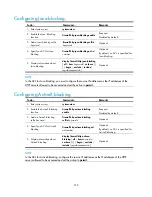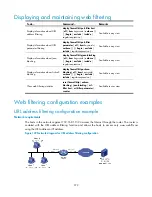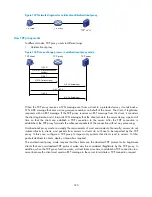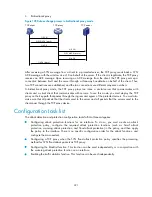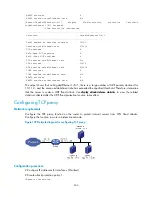
389
•
UDP session establishment rate
•
Number of ICMP sessions
•
ICMP session establishment rate
•
Number of RAW IP sessions
•
RAW IP session establishment rate
NOTE:
•
The device collects statistics to calculate the session establishment rates at an interval of 5 seconds.
Therefore, the session establishment rates displayed on the device are based on the statistics collected
during the latest 5-second interval.
•
The traffic statistics function is not concerned about the session status (except the TCP half-open and
half-close states). As long as a session is established, the count increases by 1. As long as a session is
deleted, the count decreases by 1.
TCP proxy
The TCP proxy function can protect servers from SYN flood attacks. A device enabled with the TCP
proxy function can function as a TCP proxy between TCP clients and servers. Upon detecting a SYN
flood attack, the device can add a protected IP address entry for the attacked server and use the TCP
proxy function to inspect and process all subsequent TCP requests destined to the server.
Working mode
TCP proxy can work in two modes:
•
Unidirectional proxy
—Processes only packets from TCP clients.
•
Bidirectional proxy
—Processes packets from both TCP clients and TCP servers.
choose a proper mode according to your network scenario. For example, if packets from TCP clients to
a server go through the TCP proxy but packets from the server to clients do not, as shown in
configure unidirectional proxy. If all packets between TCP clients and a server go through the TCP
proxy, as shown in
, configure unidirectional proxy or bidirectional proxy as desired.
Figure 132
Network diagram for unidirectional proxy




